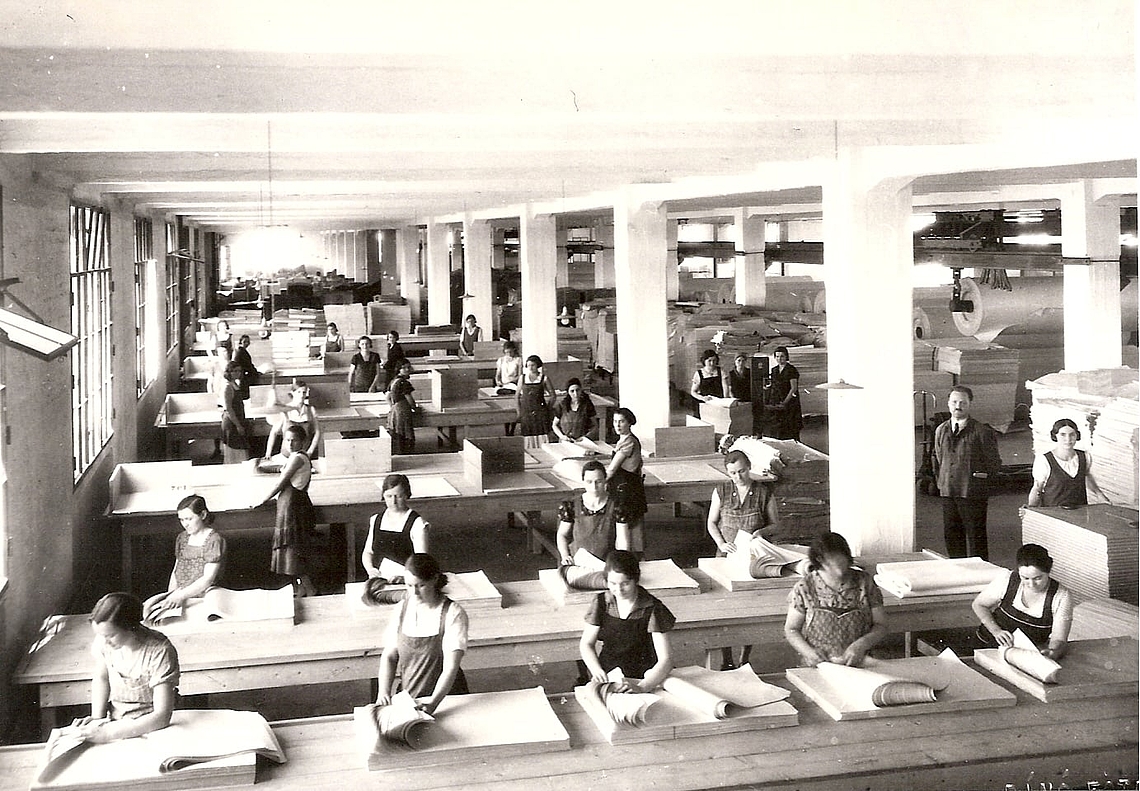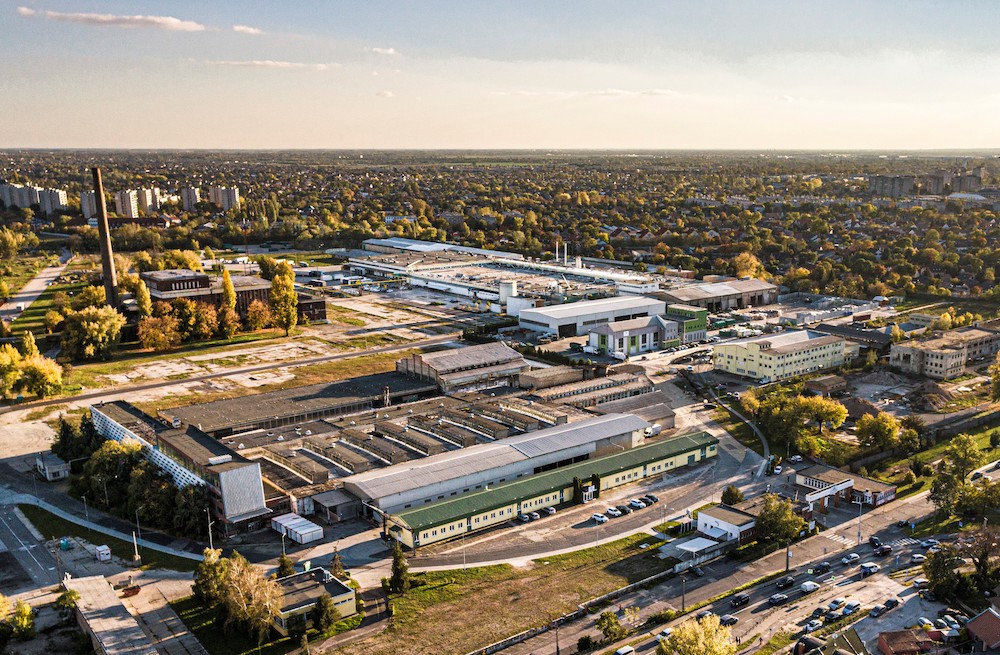This year, Dunapack Packaging's Csepel plant, formerly known as Csepeli Papírgyár, is celebrating its centenary. The first paper machine of the facility on the bank of the Danube produced corrugated paper, which was already a popular raw material for packaging materials at the time, and we still see them daily on store shelves. In addition, corrugated paper is one of the most sustainable packaging materials today: it is made from 90% recycled materials and is recycled in the same ratio. Csepel is still active today, although the 100-year-old factory no longer manufactures base paper, but modern packaging solutions made from it.
100 years of Hungarian expertise at the international forefront
“Csepel Duna Street 22. (...) Urgent address: Nemepapirus Csepel. Number of workers: 150, Steam power: 600 HP. Manufacturing: Printing and wrapping papers, corrugated paper, plates and collapsible corrugated boxes, chromo colored and variegated paper”, reads the entry under the title Neményi Testvérek Papírgyár Rt. in the directory of Hungarian factories published by Dr. Károly Koffer in 1926 about the Csepel plant which was then in operation for its third year. Of course, as the saying goes, a lot of water has flowed down the Danube since then, but high-quality paper industry has been a mainstay at the Csepel site ever since.
“The paper industry in Csepel has represented modern technology for a century, and a high level of professionalism has characterized the plant ever since. The knowledge of Hungarian specialists spanning generations – many of our colleagues have worked for 20, 30, 40 years or are still working at the plant – represents great value” pointed out Dennis Belkovsky, the managing director of Dunapack Kft., under which the Csepel factory operates today. He added, “The production of corrugated paper, as well as corrugated products and packaging materials made from it played an important role throughout the last century, so the Csepel factory, which is celebrating its centenary this year, is not only one of the Central European cradles of the industry, but also its most important base in Hungary.”
Surviving the historical storms of the century
In the decades following World War II and nationalization, the history of the Csepel Paper Factory was marked by such milestones as the installation of a new paper machine from Finland, also producing corrugated paper, delivered in 1966, which was the first in our country to operate with modern automatic control. The popularity of corrugated products continued to rise even after the fall of communism: after privatization, through the new owner, the Prinzhorn Group with Austrian background, even more markets opened up for the Csepel factory, now operating under the name Dunapack. The company group combined modernized technology with the outstanding know-how of Hungarian specialists, so the Csepel subsidiary is still a leading player in the country and the region.
From 1993, the paper production and the production of corrugated products were divided organizationally and then geographically: from 2009, the corrugated base paper is produced entirely in the company group's factory in Dunaújváros on one of Europe's most modern, efficient and environmentally friendly paper machines.
“Although we no longer produce paper in Csepel for the last decade and a half, we still produce corrugated products at this illustrious location – now using modern and energy-efficient machines that meet the standards of the time. Overall, we use much less energy and water, and packaging materials and boxes are made almost exclusively from recycled materials. We are proud that in this way we contribute to the history of one of Hungary's most significant industrial plants, which has been operating without interruption for the past hundred years,” said Dennis Belkovsky.
The bastion of the circular economy: 100 years of knowledge in every box
A marked change in recent decades has been the advent of the circular economy, the essence of which is to ensure that once-extracted raw materials – for example, wood – remain in the cycle of the economy as long as possible, thus reducing the number of natural resources used. The paper industry as whole is a world champion in recycling, and the corrugated paper industry stands out within it, as it is at the forefront of implementing the circular economy.
Wastepaper has been used in Csepel since the 1980s, and today, through the domestic subsidiaries of the Prinzhorn Group, the entire industrial cycle is realized in Hungary: one of Dunapack Packaging's sister companies, Hamburger Recycling Hungary Kft., collects the paper waste generated in Hungary, among others, while Hamburger Hungária Kft. in Dunaújváros produces 700,000 tons of corrugated base paper from this (plus imported paper waste) every year, from which Dunapack Kft. makes modern packaging solutions in its factories in Dunavarsány, inaugurated last year, and in Csepel, which is 100 years old this year. These solutions are then used by thousands of Hungarian businesses to package their products.
The products of the corrugated paper industry are by far the largest proportion of packaging that remains in circulation in the EU and in Hungary, with a recycling rate of around 90% and the same level of recycled content, thereby contributing greatly to the preservation of Hungary's natural values. Csepel also plays a role in all of this, so it is not only a factory with great heritage, but also one of the engines of the country's green economy.
The age of “smart boxes” is here: where less is really more
A lot has changed in the last 100 years: while the main task of packaging materials used to be to protect products, today it is just one of many functions – the box is part of the design and image of the product. Packaging can also improve efficiency in supply chains, logistics and product handling processes, and thus contribute to reducing costs. With the production of "shelf-ready" boxes, the product can be placed on store shelves immediately, which can reduce the time of stocking by up to 50%. Innovation also appeared in the field of transport and logistics, so the engineers are also modelling how to place and transport as many products as possible on pallets in as little space as possible, using as little paper material as possible. In this field, 40% better space utilization was achieved. Behind these developments is significant engineering, research and analytical work, and even a 1% improvement in efficiency can result in huge cost reductions in logistics.


